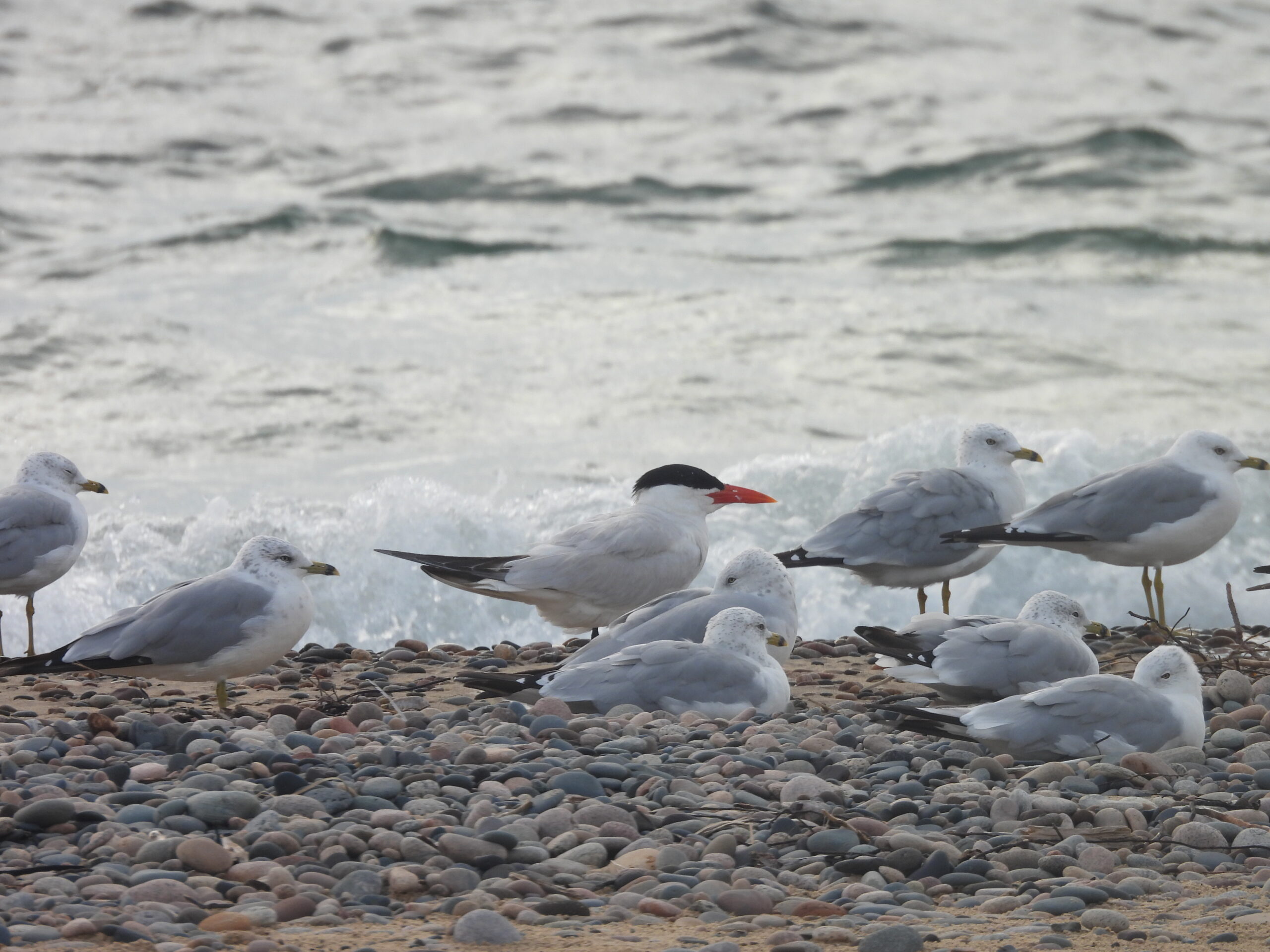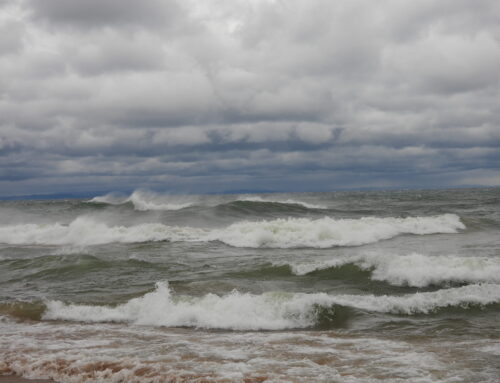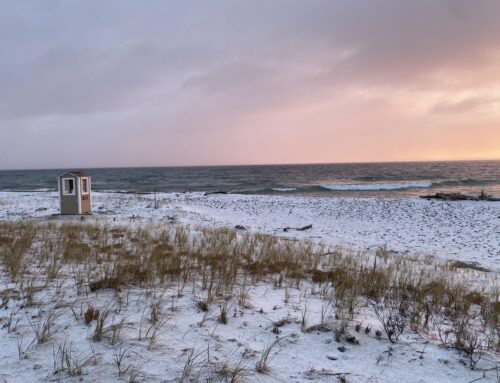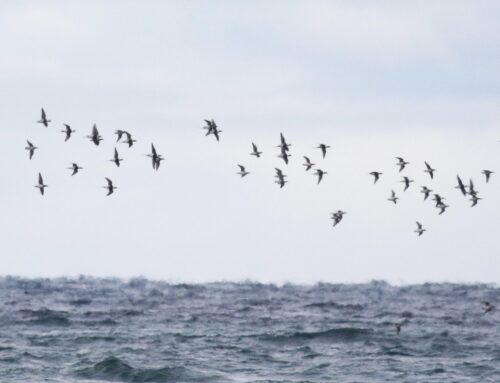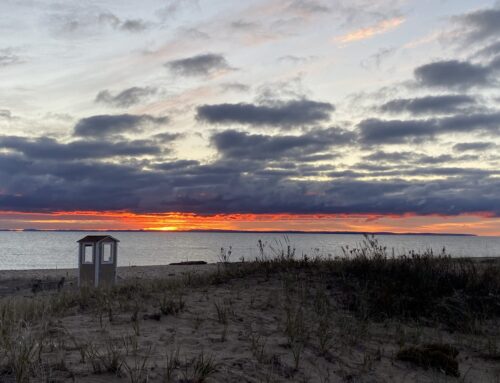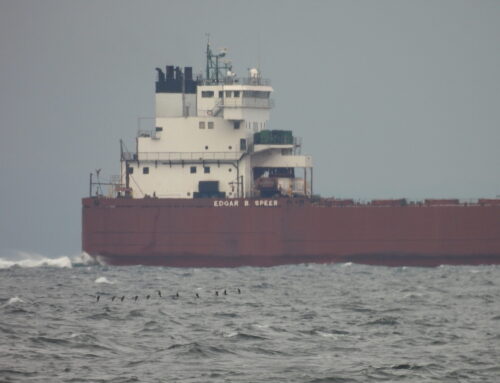Another season of waterbird counting is officially underway at Whitefish Point! Our work started the day before the count on August 14th. With the help of some dedicated local volunteers we moved the waterbird ‘shack’ to its fall vantage point. This structure will serve as an important windbreak and refuge for the waterbird counter during the coming fall storms. Our crew was rewarded with great views of a Buff-breasted Sandpiper on the beach after finishing the work. The resident breeding Piping Plovers departed before the start of the waterbird count this year, but mid-August is still a great time to observe migratory shorebirds on their fall journey southwards.
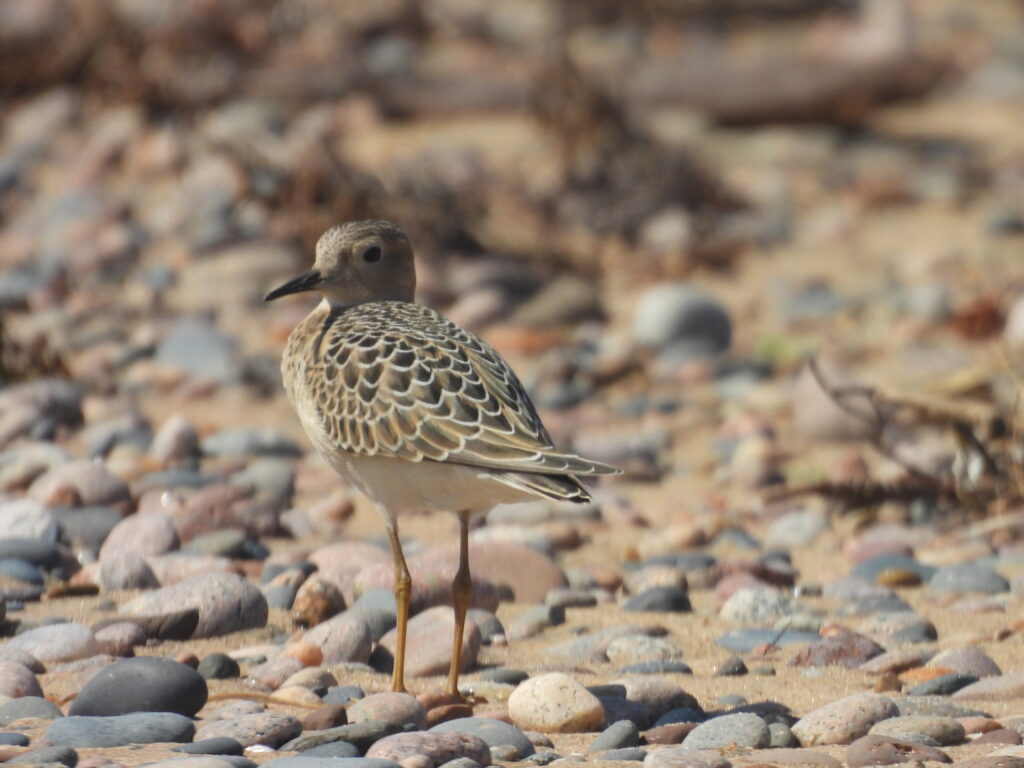
Buff-breasted Sandpiper. Photo by Frank Fabbro
During the first few days of the count we observed 12 species of shorebirds around the point. Semipalmated Sandpipers and Semipalmated Plovers were the most numerous and often visible feeding along the sandy shorelines. A lone Ruddy Turnstone and striking adult Black-bellied Plover were also observed flying past the tip of the point on August 16th and 15th respectively. Another species of shorebird, Solitary Sandpipers, prefer to use secluded and more vegetated wetlands during migration. Still, we detected 6 different individuals this week as they flew over the lake giving their distinctive two-note call in the morning.
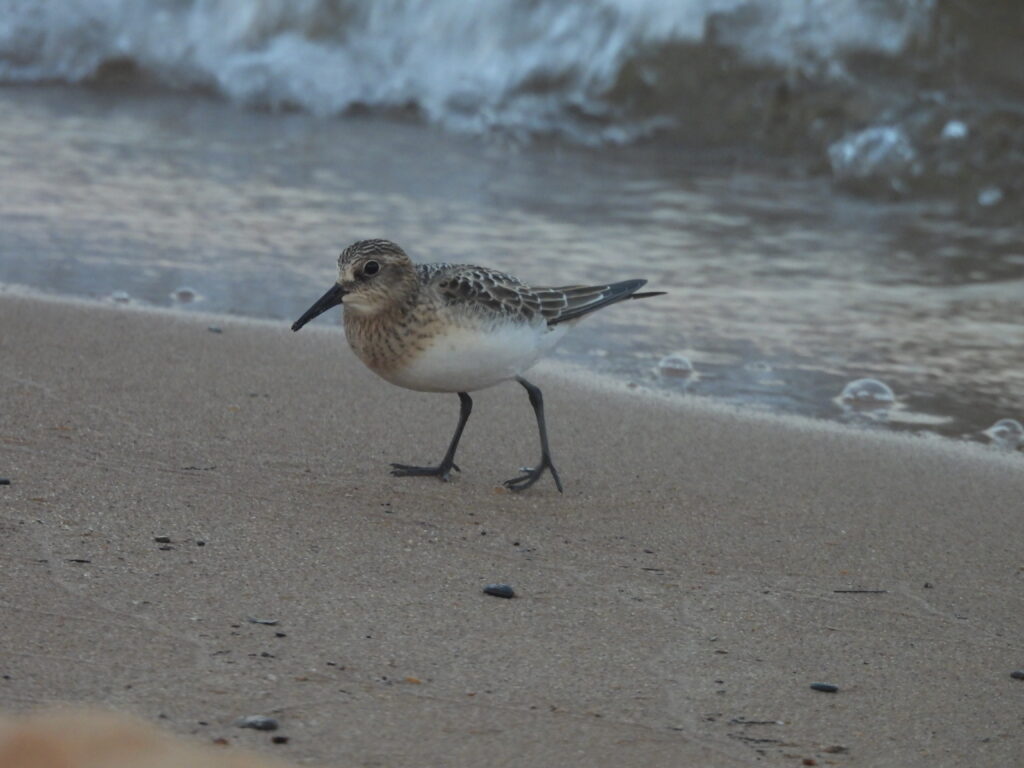
Baird’s Sandpiper. Photo by Frank Fabbro
Alongside shorebirds Whitefish Point is renowned for another mid-August migratory spectacle, Red-necked Grebe flights. These unique waterbirds breed on lakes in the interior prairies and forests of northern North America but spend the winter months in the ocean and eastern Great Lakes. During these eastward post-breeding movements the birds tend to follow the Great Lakes, and the point is perfectly located to observe them funneling through Lake Superior. On our biggest day this week we observed 1,673 fly past during the 8-hour count period! Red-necked Grebes are very distinctive in flight with their flash of white in the wings, gangly long necks, trailing feet, and frantic wingbeats. These flocks of grebes are often quite far offshore but there are not many places you can see groups of 40+ grebes actively migrating!
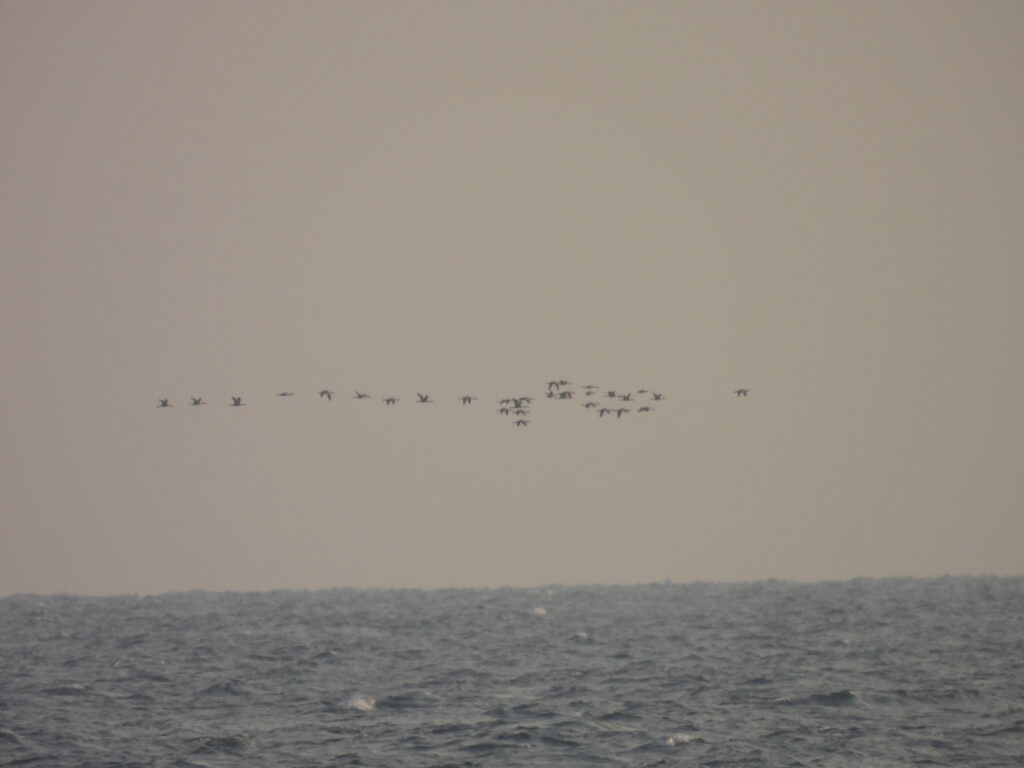
Red-necked Grebe. Photo by Frank Fabbro
One group of waterbirds we don’t see many of at the fall count are herons and egrets (Ciconiiformes). Great Blue Herons fly past with some regularity and this week we saw 8 individuals. Two birds even landed briefly at the top of a jack pine in the dunes for me on 8/15. It was more surprising, however, when a Great Egret flew past on the morning of August 16th. Late summer and early fall is a great time to see wandering waders and this Great Egret is one of only a handful of records for the fall count.
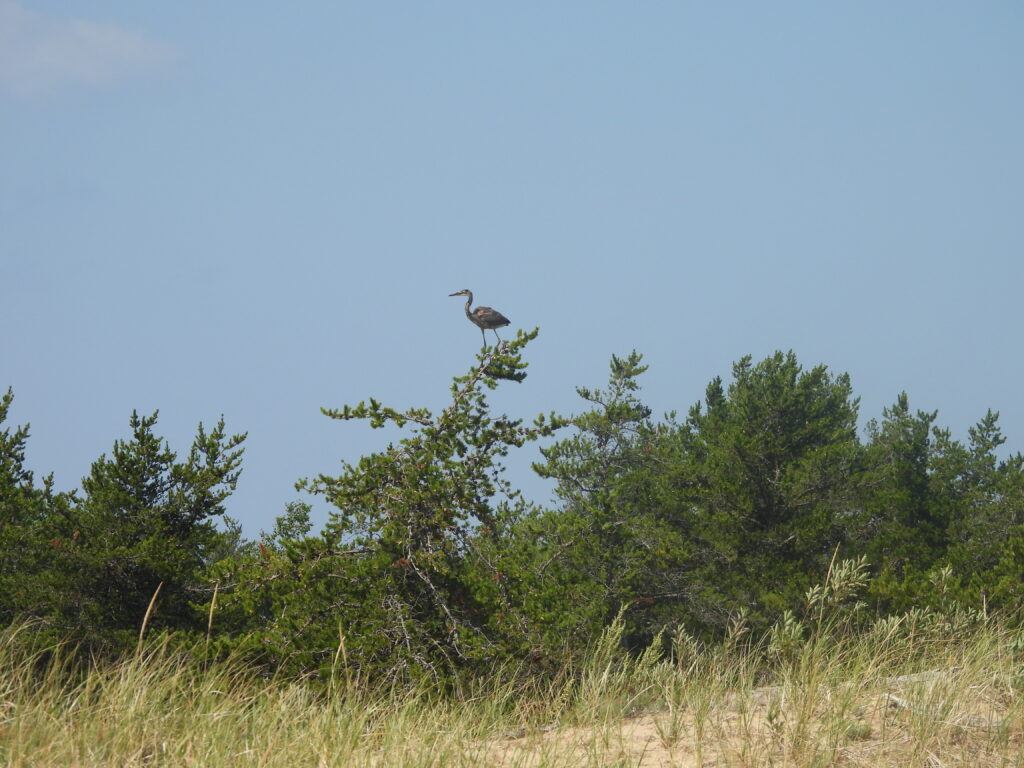
Great Blue Heron. Photo by Frank Fabbro
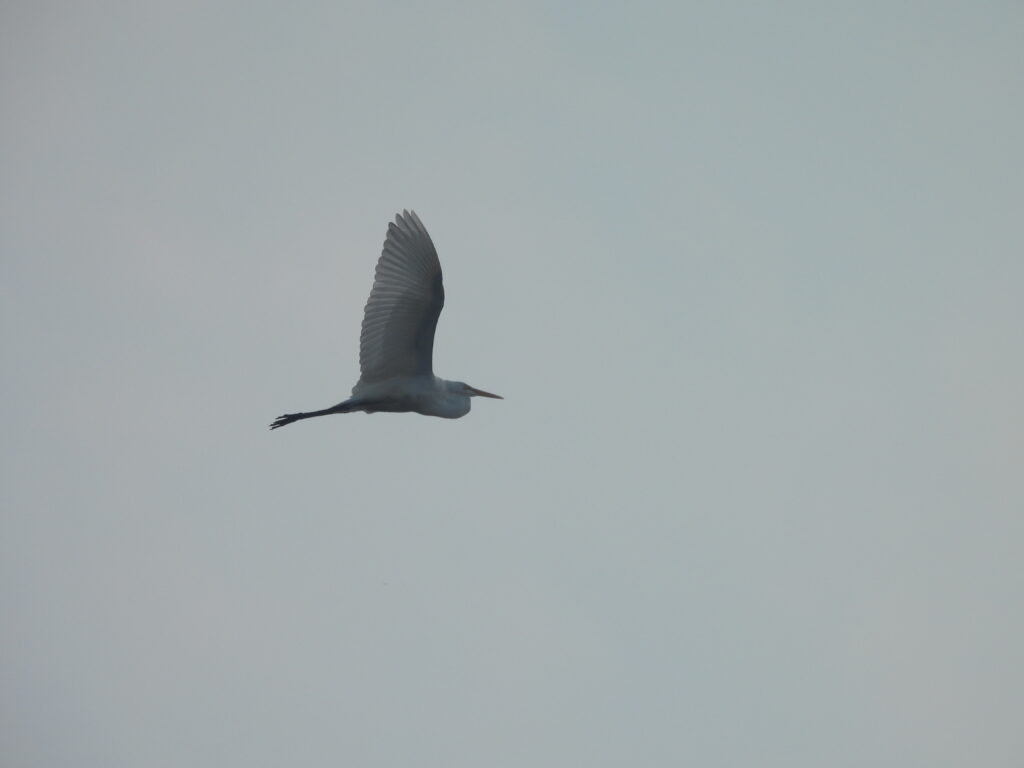
Great Egret. Photo by Frank Fabbro
There were certainly some slow moments on the count this week as well. With only a few teal and Mallards observed we are looking forward to some movements of ducks as September approaches. On August 19th, Clay spotted our first jaeger of the season. Unfortunately, it was too far away to identify to species (as these challenging identifications often are!) but hopefully it’s a good sign of more to come this fall. Outside of waterbirds, there have been a lot of Red-breasted Nuthatches and different species of finches moving around the point this week. It’s too soon to tell what fall irruptions might be in store but the odd flyover songbirds can liven up some of the slower waterbird days. See Clay’s Field Notes blog for a more thorough coverage of the non-waterbird highlights this week.
~Frank Fabbro, 2025 Fall Waterbird Counter
Featured Photo: Caspian Tern by Frank Fabbro
You can now see the waterbird count data on Trektellen! Check it out at trektellen.nl/count/view/4209.
You can keep up with the 2025 Fall Waterbird Count by reading Frank’s weekly blog posts and following WPBO’s social media (Facebook, Instagram, and X). The fall waterbird count runs August 15 through November 15.
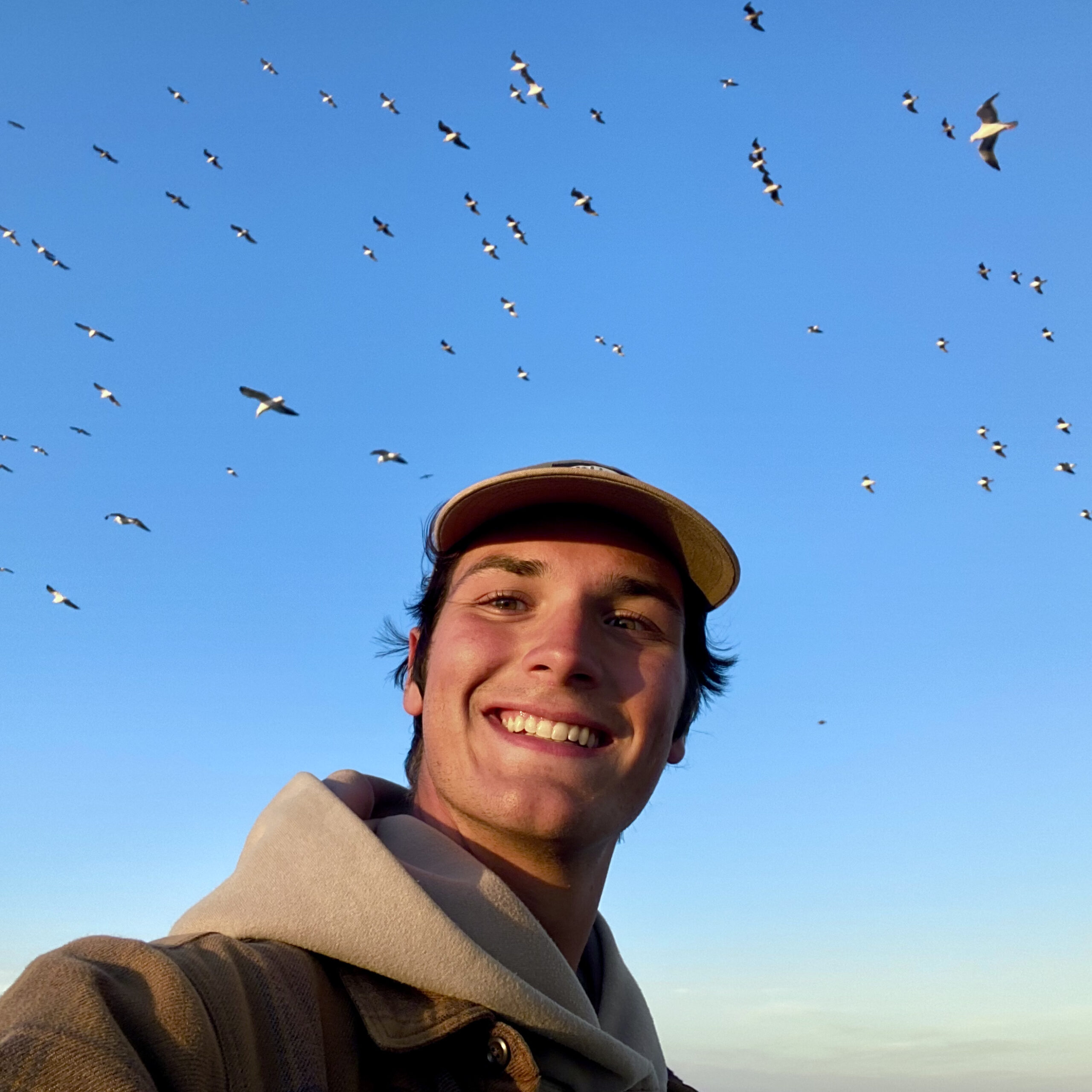
Frank Fabbro: 2025 Fall Waterbird Counter
Frank is an avid birder who was first introduced to the spectacle of bird migration along the Mississippi Flyway in his home state of Minnesota ten years ago. Since then, he has pursued his passion for birds, and the amazing places they inhabit, across the country and around the world. He studied Wildlife Biology and Landscape Restoration at the University of California, Davis, and since graduating has worked on a variety of bird-related projects, ranging from Spotted Owl surveys to prairie-chicken tagging and counting migrating seabirds. He’s excited to be back in the Northwoods, once again experiencing the excitement of fall migration along the shores of Lake Superior.

